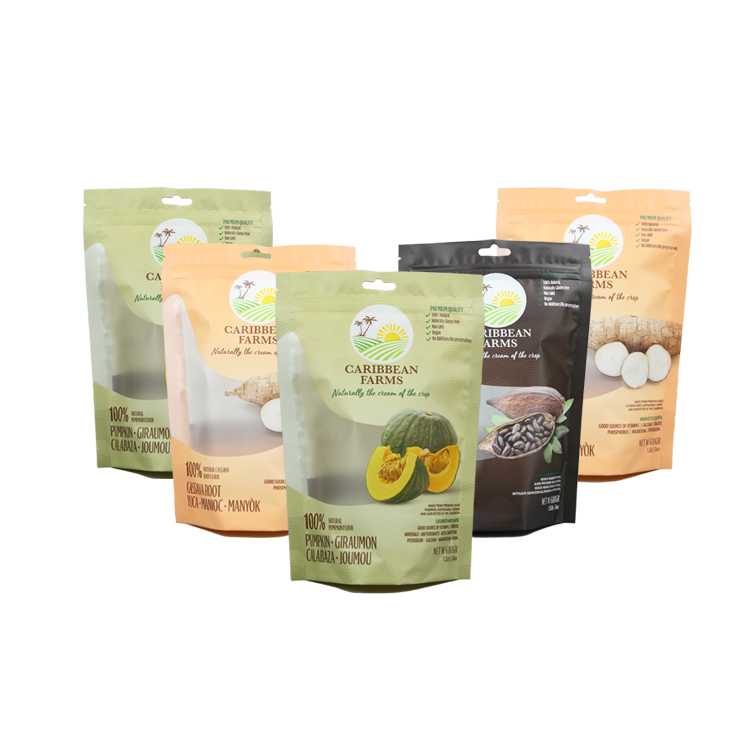Mono material refers to packaging that is made from a single type of material rather than a combination of different materials. In the context of composite packaging bags, mono material means that the entire bag is constructed from one type of material, which simplifies the recycling process and reduces environmental impact compared to multi-material packaging.
As we all know food packaging bags are often composite packaging bags because they need to fulfill a variety of functions to ensure the safety, freshness, and integrity of the packaged food. Composite packaging refers to the use of multiple layers of different materials in the construction of the packaging,like the most popular material for food packaging bags including PET/VMPET/PE,OPP/VMPET/PE,PET/PE,PA/PET/PE and so on.But packaging with multiple layers of different materials presents a recycling challenge as it hinders the straightforward separation of components. The varied composition complicates the recycling process, making it harder for facilities to efficiently sort and recycle each material layer. This complexity often results in lower recycling rates and increased environmental impact, prompting the need for sustainable alternatives such as mono material packaging that simplifies recycling and promotes a more eco-friendly approach.

Common materials used in mono material composite packaging bags include:
Polyethylene (PE): BOPE/PE
Polypropylene (PP): OPP/CPP,OPP/VMOPP/CPP
PET (Polyethylene Terephthalate): Not available yet.
Paper: Not available yet, under development.
Features and Advantages of Mono Material:
Recyclability: One of the main advantages of mono material packaging is that it is often easier to recycle compared to multi-material packaging. The simplicity of using a single type of material makes it more straightforward for recycling facilities.
Environmental Impact: Mono material packaging can have a lower environmental impact because it simplifies the recycling process and reduces the likelihood of materials ending up in landfills.
Regulatory Compliance: In regions where there are strict regulations regarding packaging recyclability, using mono material can help companies comply with these regulations.
Waste Reduction: By using a single material, the production and disposal of packaging waste may be reduced.
Disadvantages of Mono Material:
Limited Barrier Properties: Depending on the specific material chosen, mono material packaging may have limitations in terms of barrier properties, such as moisture resistance or gas permeability. This can be a disadvantage for certain types of products.
Material Selection Challenges: Finding a suitable mono material that meets the necessary criteria for the specific application can be challenging. Some products may require a combination of materials for optimal performance.
Cost: In some cases, mono material solutions might be more expensive than traditional multi-material packaging, especially if specialized materials are required.
Product Compatibility: Certain products may not be compatible with certain mono materials, especially if they have specific requirements for preservation or protection.
In summary, while mono material packaging has environmental benefits and is often easier to recycle, it may come with limitations in terms of barrier properties and material selection. Companies need to carefully consider the specific requirements of their products and balance environmental considerations with functional and economic factors when choosing packaging materials.
Post time: Dec-27-2023

